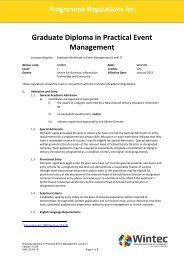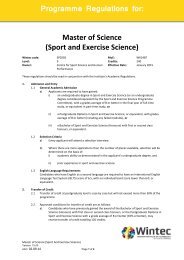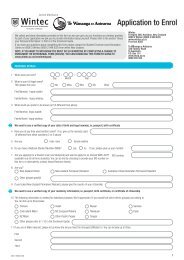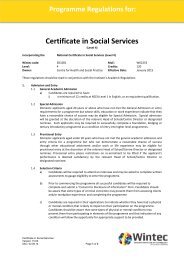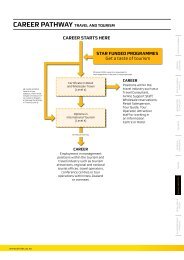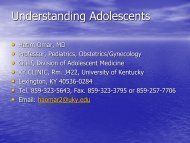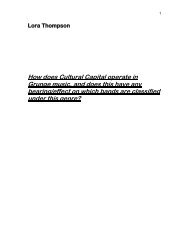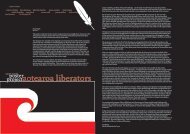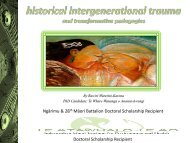Nursing Handover Research Project - Wintec Research Archive
Nursing Handover Research Project - Wintec Research Archive
Nursing Handover Research Project - Wintec Research Archive
You also want an ePaper? Increase the reach of your titles
YUMPU automatically turns print PDFs into web optimized ePapers that Google loves.
“<strong>Handover</strong>s explicit function is to communicate information from one nurse/shift to the next<br />
and formally hand over responsibility for patients” (Evans et al., 2007, p.40).<br />
Communication is a main construct found in the literature. It is well understood the main<br />
activity of handover is to communicate information and transfer responsibility (Cohen &<br />
Hilligoss, 2009; Meibner et al., 2007). It is the transfer of patient care, responsibility and<br />
accountability (Alvardo et al. 2006; Johnson & Barach, 2009; Meibner et al.; Munn, 2008;<br />
Patterson, 2008; Strople & Ottani, 2006). Cohen and Hilligoss (2009) construct handover as<br />
communication inciting the transfer of patient control. Control and responsibility are terms<br />
used almost interchangeably yet have very different implications particularly when talking<br />
about patients. Communication as a mode for information exchange seems clear and simple,<br />
in fact quite linear, yet the process is not as linear as it first appears (Strople & Ottani, 2006).<br />
The social, cultural and institutional elements that are vital ingredients of handover need to be<br />
recognised as major facets in communication (Gee, 2005). However, often communication is<br />
constructed as a singular act of just delivering information.<br />
“They talk together about their workaday world-support and help each other to understand<br />
it. This process cannot be communicated beyond the nursing culture because others find it<br />
gross, bizarre and frightening” (Parker & Gardner, 1992, p.8).<br />
<strong>Nursing</strong> has long favoured the oral tradition for communication (Parker & Gardner; Radka,<br />
2003; Rowe, 2001; Scovell, 2010). Historically the oral culture that nursing has aligned itself<br />
to allows private and temporary information exchange (Parker & Gardner). The text talks of<br />
written report and oral handover varying in content and that oral handover provides time to<br />
talk holistically about patient care encompassing the very important psychosocial elements<br />
(Meibner et al., 2007). The use of oral language allows the nurse to construct the patient as<br />
person (Radka, 2003). Oral communication allows the nurses to construct their world as they<br />
choose and allocates a time to process some of the out of the ordinary experiences that they<br />
as nurse have encountered (Parker & Gardner, 1992). Talk is a central element to nursing<br />
care and helps to make the extra ordinary, ordinary so that patient care continues (Parker &<br />
Gardner). Nurses talk and support each other within the nursing culture almost failing to<br />
recognise the importance of what they do day in and day out (Parker & Gardner).<br />
Communication in handover also has unhelpful negative constructions in that some of the<br />
information handed over is superfluous and could be found elsewhere (Benson et al., 2007).<br />
Most of the information that is handed over during handover could be found in the patient<br />
19



